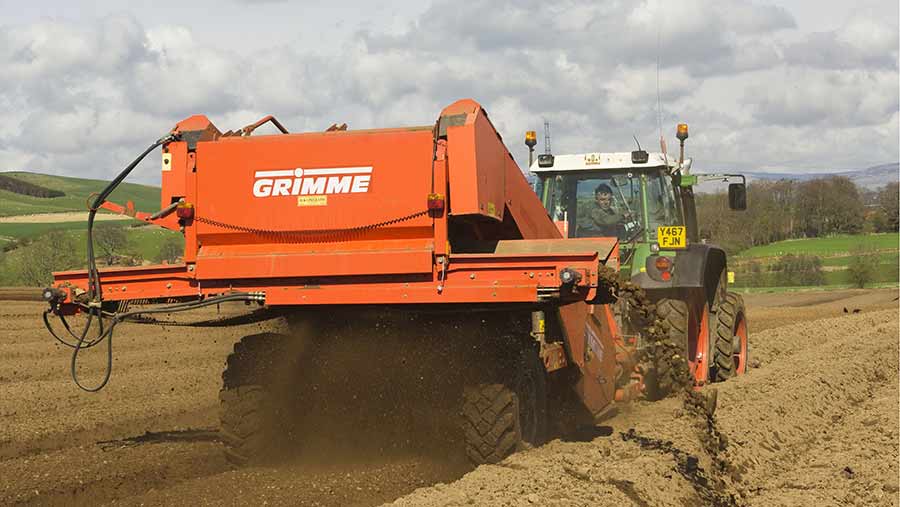5 potato experts give tips on managing nematodes
 © Design Pics Inc/Rex-Shutterstock
© Design Pics Inc/Rex-Shutterstock A shortage of a key nematacide will reduce the options for controlling free-living nematodes (FLN) in potatoes next season and, therefore, avoid costly losses from spraing
The continued closure of agrochemical manufacturer Dupont’s Texas production plant means there is unlikely to be any supply of key nematicide Vydate (oxamyl) and other products maybe in short supply.
Managing FLN is important, as they transmit tobacco rattle virus (TRV), which causes the tuber disorder spraing.
See also: Pesticide shortage likely after factory’s fatal chemical leak
Philip Burgess, head of knowledge transfer at AHDB Potatoes says their control is complex. “Therefore, it’s important that growers and agronomists have the latest information available to them.”
To help growers and agonomists, the levy board asked five potato experts for their tips on managing FLN in 2016:
 1. Eric Anderson, Scottish Agronomy
1. Eric Anderson, Scottish Agronomy
His top tip is get a move on and get your soils sampled now.
“Soil sampling for FLN needs to be carried at the right time and in the right way.
“We know from experience and the latest research that nematode numbers can change over small distances, up and down the soil profile and with the weather.
“Therefore make sure you follow the correct protocol to get the best result possible. It’s especially important to avoid frosty weather when sampling.
“And in my view it’s not only important to know the nematode species present, but also to test for presence of the TRV virus, so I’ll also be encouraging my clients to spend the extra to get the best information available.”
 2. John Sarup, Spud Agronomy
2. John Sarup, Spud Agronomy
His top tip is for growers to manage their expectations now as to the control level they might achieve
“Vydate has been the product of choice for FLN control for a long time and the effect of this season’s shortage will mean difficult decisions for many.
“It’s simply not possible to swap Vydate for something else, as there are implications for the way it’s applied and importantly the harvest intervals.
“And to be frank there’s implications to level of control you can expect, let alone the extra costs.
“I’ll be getting my growers to look hard at each field and variety and asking what we can do to reduce the risk in each and every case.”
 3. David Turner, Turner Agriculture
3. David Turner, Turner Agriculture
His top tip is to get machinery ready now.
“Growers must plan ahead as changing to a different product may require alterations to the machinery being used.
“Different products may need different rotors to apply accurately and of course it may take more time to accurately calibrate the machines.
“Get ready for planting 2016 now.”
4. Martyn Cox, Blackthorn Arable
His top tip is to remember you need to know what it is you’re dealing with.
“Risk assessment is key but in order to do this you need to understand the complex interactions.
“Different nematode species, soil types and varieties and knowing detailed field history, is a key part of my risk assessment.
“But growers and agronomists need to remember that not all spraing is TRV transmitted by free living nematodes.
“Remember you need to know what you’re dealing with.”
 5. James Lee, GVAP
5. James Lee, GVAP
His top tip is to follow the stewardship guidelines.
“Nematicide stewardship is critical for industry to maintain our control of nematode pests such as FLN in the future.
“We have very few weapons left in our armoury; and one less in 2016 with the temporary loss of Vydate.
“Unless we can be seen to be using our nematicides judiciously and responsibly we risk losing them all.
“Training workshops are available through supply chains or Artis [an agricultural and horticultural industry training initiative], and should be attended by anyone involved in the application of nematicides, and would prove useful for anyone giving advice on their use.”
See the full AHDB advice on soil parasites.

